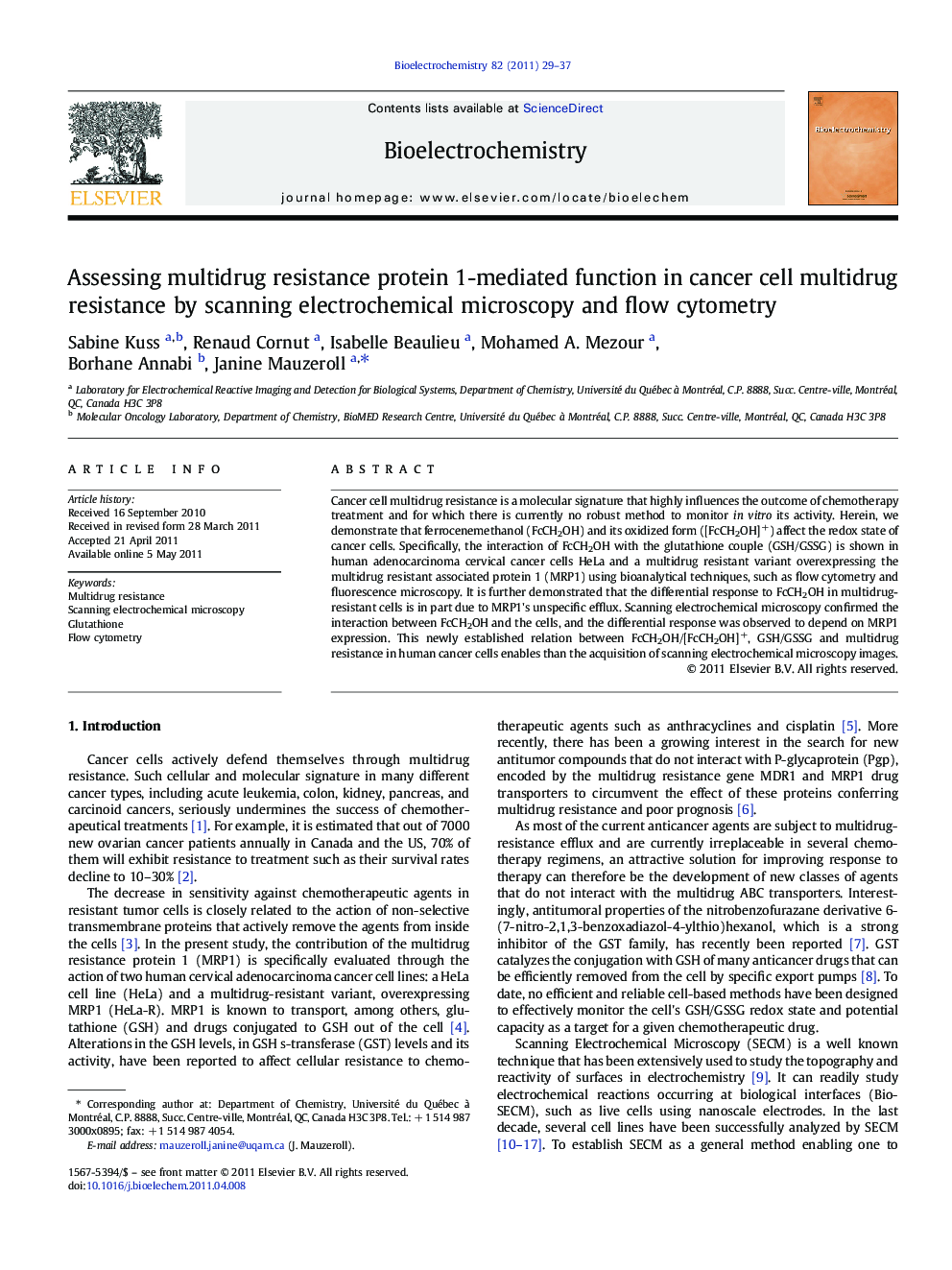| Article ID | Journal | Published Year | Pages | File Type |
|---|---|---|---|---|
| 1274606 | Bioelectrochemistry | 2011 | 9 Pages |
Cancer cell multidrug resistance is a molecular signature that highly influences the outcome of chemotherapy treatment and for which there is currently no robust method to monitor in vitro its activity. Herein, we demonstrate that ferrocenemethanol (FcCH2OH) and its oxidized form ([FcCH2OH]+) affect the redox state of cancer cells. Specifically, the interaction of FcCH2OH with the glutathione couple (GSH/GSSG) is shown in human adenocarcinoma cervical cancer cells HeLa and a multidrug resistant variant overexpressing the multidrug resistant associated protein 1 (MRP1) using bioanalytical techniques, such as flow cytometry and fluorescence microscopy. It is further demonstrated that the differential response to FcCH2OH in multidrug-resistant cells is in part due to MRP1's unspecific efflux. Scanning electrochemical microscopy confirmed the interaction between FcCH2OH and the cells, and the differential response was observed to depend on MRP1 expression. This newly established relation between FcCH2OH/[FcCH2OH]+, GSH/GSSG and multidrug resistance in human cancer cells enables than the acquisition of scanning electrochemical microscopy images.
► Using flow cytometry, fluorescence and scanning electrochemical microscopy analysis. ► Ferrocenemethanol and its oxidized form affect the redox state of human cancer cells. ► The response to ferrocenemethanol in resistant cells is related to MRP1 activity.
